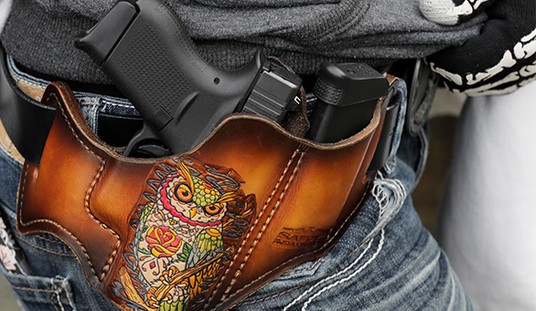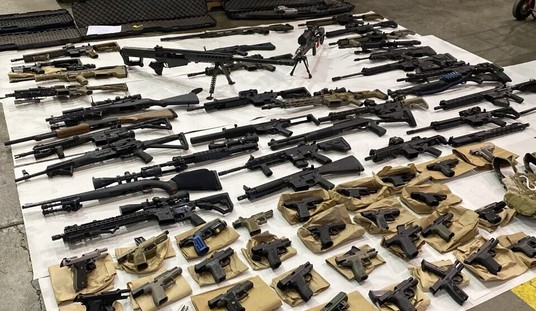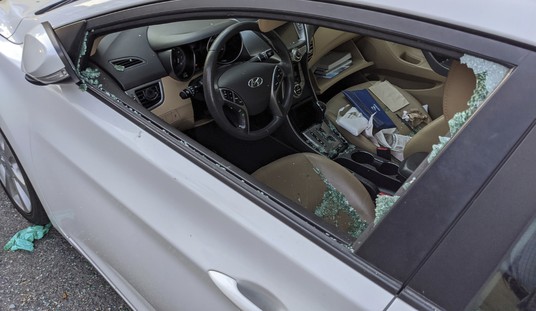According to a new report by the Los Angeles Sheriff’s Department (LASD), the agency saw a significant increase in negligent discharges when its officer transitioned from the Beretta 92F to the Smith & Wesson M&P:
The Los Angeles County Sheriff Department’s recent transition to a new handgun for deputies has coincided with a sharp increase in accidental shootings, “putting officers and the public at risk,” according to newly released report.
Despite efforts to address the problem, the risk associated with the new Smith & Wesson M&P 9mm “remains substantial,” according to the report by Los Angeles County Inspector General Max Huntsman.
“There is a continued risk that either LASD employees or civilians may be seriously wounded or killed by an unintended discharge,” Huntsman wrote.
He said further study and steps to mitigate the problem are needed “before a tragedy occurs.”
The report, an advance copy of which was obtained by CNN, found that a sheriff’s department training program for deputies converting to the new gun is inadequate.
“We conclude that the current training program is insufficient to overcome old habits learned on other handguns,” the 52-page report states. “As a result, many deputies appear to be to undertrained for the weapon they are using.”
Here we go again, and once again, I’m going to tell the people claiming that “it’s just a training issue” that they’re wrong.
Some months ago, I wrote an article for the Los Angeles Times suggesting that striker-fired guns like the M&P adopted by the LASD and the Glocks adopted nationwide were a bad idea.
The feedback was… spirited.
So let’s try to restate the same points (which haven’t and will not ever change) in a manner that will lead to more education and less denial.
When law enforcement agencies transitioned from double-action revolvers to semiautomatic 9mm pistols in the 1990s, they typically transitioned to double-action/single action pistols like the “3rd generation” Smith & Wessons, the Beretta 92, and similar pistols where they still had a long and heavy double-action trigger pull for their first shot.
This long and heavy trigger pull masked both inadequate training and human nature.
It has been proven time and again that no amount of training will eliminate the issue. In one videotaped training session after another, about 20% of officers end up putting their fingers on the trigger of their guns when they shouldn’t, and most of them don’t even realize it, and are stunned when they are shown the undeniable truth in the video. According to experts I interviewed who have trained tens of thousands of police officers this is consistent, regardless of the level of training.
We can continue to deny that “humans are gonna be human,” or we can accept that people will make mistakes and switch to designs that have longer first-shot trigger pulls which are more forgiving.
This human tendency to “trigger check” under stress is not training related, and cannot be “trained out.” It happens to rookies fresh out of the academy, and it happens to 20+ year veteran SWAT cops with hundreds of missions under their belt.
When the officer in question has his gun pointed at a suspect when he trigger checks, bad things happen. Ask Patrick Feaster and the wreck survivor he paralyzed when he pulled the trigger on his Glock 21C.
I had a long conversation with John Johnson of Ballistic Radio about the phenomena last night. John shoots tens of thousands of rounds a year (more than some entire law enforcement agencies) and trains with some of the best firearms instructors in the nation.
His conclusion echos that of many of the other experts I’ve spoken with in the industry.
It’s a trigger issue.
Most striker fired guns like the M&Ps used by the LASD and the Glocks used by 60% of the agencies in the nation have a relatively short (when compared to a double-action only or double-action/single action) trigger pull.
The way John phrased it was, “it’s pre-travel. It’s about time to process (the decision whether or not to fire), not weight.” Officers who have always subconciously “trigger-checked” are now discovering that with a short trigger pull, their tendency to “trigger check,” “has a loud noise associated with it,” as John so dryly noted.
So what is the solution to this well-known issue that happens across departments with such frightening consistency?
John and just about every other expert I’ve read or spoken with has come to a very similar conclusion: there needs to be a longer, but not necessarily heavier, trigger pull in law enforcement handguns.
Darryl “nyeti” Bolke has a lot of trigger time with different handguns under his belt, and offers up the suggestion of Heckler & Koch’s LEM (Law Enforcement Modification) trigger as the best of the existing breed.
I like the L.E.M. Here is why. It is a consistent trigger. It has all of the take up of the DA, without the weight and effort. The trigger goes back to the same long take up location when the finger comes off the trigger. Essentially, it is like de-cocking without having to use a de-cocker, just a simple removal of the finger from the trigger to its register location. Lots of take up and both tactile feel that the trigger finger is on the trigger, and a visual input from the hammer. That same visual and tactile input is also there during the reset and every other movement of the trigger-you can always see the hammer moving with the trigger.
The negative, is there is a lot of trigger movement going on. This is an issue when pure speed is the goal. It is not an issue when you have to think and justify every single movement of the trigger when employing the gun against people.
In the end, that’s the reality we seem to be having a hard time addressing.
We tend to chose handguns based upon how we shoot them on the square range under ideal conditions, and that is consistently failing in the real world, because the real world is so much more complex, and each shot means so much more.
Police are learning this hard way, but sadly, so are many other citizens. The vast majority of “accidents” (negligent discharges) I read about are with striker-fired guns.
We need manufacturers to stop designing triggers for defensive handguns that are designed for punching holes in paper targets, and start designing triggers that are actually suitable for fighting handguns.









Join the conversation as a VIP Member